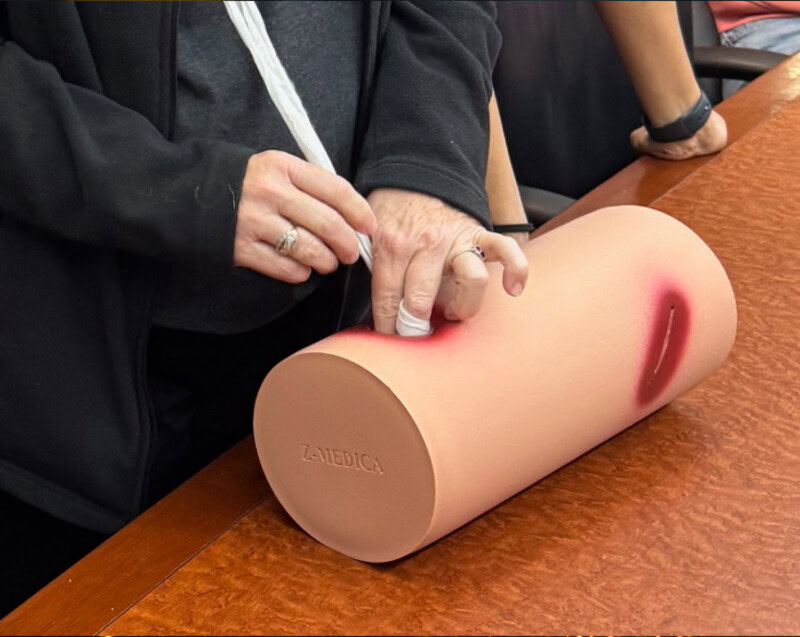Winter is still ahead of us, and with the coldest months come dangerous roads. In anticipation of the worst, consider assembling a winter survival kit to carry with you on car trips where you may encounter winter weather or emergency road closures. To help you know how best to prepare for situations like this, the CTEH safety team has assembled a list of best practices to use when putting together your kit.
How to Make a Winter Survival Kit
A survival kit should contain everything you need if you become stranded on the road. When you assemble your kit, keep in mind things like accessibility, perishables, and maintenance. For example, insert batteries into your flashlight reversed to avoid accidental switching and burnout. Store items in the passenger glove compartment or center console in case the trunk becomes jammed or frozen shut. Choose small packages of long-lasting food which can be eaten hot or cold.
These items can include:
- Shovel
- Windshield scraper and a small broom/brush for removing ice/snow from vehicle surface
- Flashlight with extra batteries
- Battery-powered radio
- Water
- Snack food including energy bars, raisins, and mini candy bars
- Matches and small candles
- Extra hats, socks, and mittens
- First aid kit with pocket knife
- Necessary medications
- Blankets or sleeping bag
- Tow chain or rope
- Road salt, sand, or cat litter for traction
- Booster cables
- Emergency flares and reflectors
- Fluorescent distress flag and whistle to attract attention
- Cell phone adapter with car lighter plug-in
Emergency Tips
As soon as you realize you might be stranded or in danger, if possible, call 911 on your cell phone. Provide your location, the conditions of your other passengers, and the problem you’re experiencing. Follow the dispatcher’s instructions: you may be told to stay where you are until help arrives. Do not hang up the phone until you know with whom you’ve spoken and what your next action should be. If you must leave your vehicle, write your name, address, phone number, and destination on a piece of paper. Leave the note inside your front windshield for someone to see.
Survival Tips
Even if you have a fully stocked survival kit, it’s still only a tool. Some simple actions and preparation can maximize your chances of survival. Before leaving on a trip, make sure your gas tank is at least half-full. Tell someone where you’re going and the route you’re taking. If your car is stuck, tie the kit’s fluorescent flag to your antenna or hang it out the window. At night, keep your interior light on to help rescuers see your vehicle from a distance. To reduce battery drain, use emergency flashers if you hear approaching vehicles. If you have passenger(s), make sure at least one person is awake at all times to keep watch.
If possible, don’t leave your vehicle. Walking in a storm can be dangerous, and you may become lost or exhausted. Avoid overexertion from shoveling snow or pushing your car. If your clothes become wet, they lose insulation value, making you more susceptible to hypothermia.
Remember your vehicle emits deadly carbon monoxide gas. If snow plugs your exhaust system, the gas can enter the vehicle. Leave the engine running for only 10 minutes to an hour at a time, and ensure the exhaust pipes are clear. You can also leave a window cracked.
Above all, don’t expect to be comfortable: you just need to survive until you’re found.
For more information about winter driving safety, visit WSDOT.com/traffic. For more information about how CTEH can help ensure your workforce safety, visit CTEH.com.




